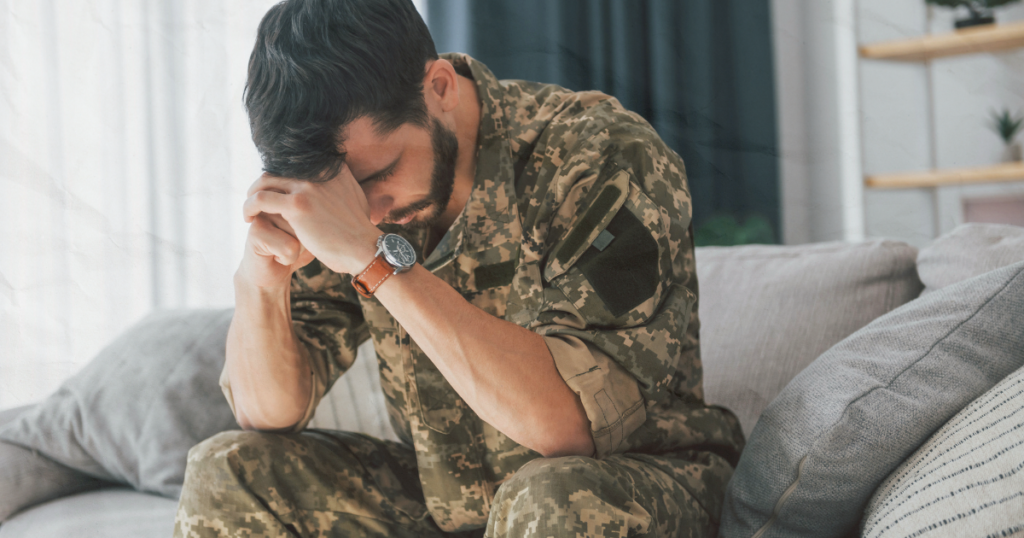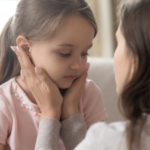
TRIUMPH OVER TRAUMA: UNDERSTANDING PTSD IN CIVILIANS BEYOND THE BATTLEFIELD
- November 6, 2023
- Scientific Insights
- 0 Comments
INTRODUCTION TO CIVILIAN PTSD
When we hear about Post-Traumatic Stress Disorder (PTSD), our minds often turn to soldiers and those affected by the ravages of war. However, the reality is that PTSD extends far beyond the battlefield, infiltrating the lives of civilians in numerous forms. PTSD in civilians—often termed ‘non-military PTSD’—encompasses a broad range of traumatic experiences from accidents natural disasters, to personal assaults. In this comprehensive exploration, we delve into the multifaceted world of civilian PTSD, understanding its causes, manifestations, and the populations it affects.
Table of Contents
PTSD in Non-Veterans: A Hidden Epidemic
Unlike military personnel, whose experiences with PTSD are widely recognized and studied, non-veterans suffering from the disorder often go unnoticed. PTSD can arise from any event that a person finds traumatic and civilian trauma isn’t limited to a single event; it can be a consequence of prolonged exposure to stressful conditions or a single, shocking occurrence.
The Misunderstood Faces of Civilian Trauma
Civilian PTSD is not restricted by age, gender, or ethnicity—it can affect anyone, from PTSD in children who have witnessed domestic violence to PTSD in adolescents following bullying or assault and PTSD in the elderly after life-altering events such as the death of a loved one. PTSD in minority populations often goes undiagnosed and untreated, leading to a cascade of social and health-related issues.

THE MANY MANIFESTATIONS OF PTSD IN CIVILIANS
PTSD in First Responders
First responders confront traumatic events regularly, from life-threatening situations to witnessing human suffering firsthand. The cumulative stress can lead to PTSD, which in many cases remains unaddressed due to the stigma of seeking mental health support in these professions.
PTSD in Victims of Violence
Individuals who have experienced sexual assault, mugging, or other forms of violence often endure long-lasting psychological trauma. PTSD in victims of violence can manifest in various ways, including flashbacks, severe anxiety, and a continuous feeling of danger despite being in a safe environment.
Recognizing PTSD in Children and Adolescents
Children and adolescents are particularly vulnerable to PTSD because they have fewer psychological resources to cope with traumatic events. In this population, PTSD might manifest through behavioral changes, such as increased aggression, fearfulness, or a drastic shift in academic performance and social interactions.
Understanding PTSD in the Elderly
Elderly individuals may experience PTSD following events like the loss of loved ones, health crises, or significant life changes. Their PTSD is often overlooked, misdiagnosed as general aging-related anxiety or depression, or ignored as a normal reaction to the challenges of aging.
Addressing PTSD in Minority Populations
Minority populations often face unique stresses, including discrimination and cultural trauma, which can exacerbate the effects of PTSD. Moreover, barriers to accessing mental health care can prevent these individuals from receiving the help they need, allowing PTSD to disrupt lives and communities silently.
THE IMPACT OF CIVILIAN PTSD
The Personal Toll of PTSD
For those afflicted, PTSD is more than a list of symptoms; it’s a profound disruption of normal life. Relationships may suffer, work performance may decline, and enjoyment of daily activities may diminish. The personal cost is high, and the road to recovery can be long and challenging.
The Wider Societal Effects
Civilian PTSD has ripple effects that extend into society. From increased healthcare costs to lost productivity, the consequences of widespread untreated PTSD in a population can be significant. Understanding these impacts is vital to addressing the needs of those affected and improving community support systems.
TREATMENT AND SUPPORT FOR CIVILIAN PTSD
Navigating PTSD Treatment Options
Treatment for civilian PTSD can include traditional therapy methods, such as Cognitive Behavioral Therapy (CBT) and Eye Movement Desensitization and Reprocessing (EMDR), as well as support groups and medication. Access to comprehensive treatment is crucial for recovery, yet many civilians face barriers to accessing these resources.
Building Support Systems for Non-Military PTSD
Support systems for non-military PTSD are essential. This support can come from family, friends, or community organizations. Creating robust support networks requires public awareness and education, helping to reduce stigma and empower individuals to seek help.
Innovations in PTSD Care
Innovations in care, including virtual reality therapy, mobile app-based support, and teletherapy, are making treatment more accessible to those who might not have sought help in the past. These advances are significant for those in remote areas or with mobility issues, such as the elderly or disabled.
CONCLUSION: A CALL TO ACTION
Erasing the Stigma, Encouraging Healing
Overcoming the challenges posed by civilian PTSD requires a concerted effort to erase stigma and promote healing. Society must acknowledge that PTSD beyond the battlefield is a pressing health issue that deserves attention, resources, and compassion.
Moving Forward with Understanding and Empathy
We must continue to expand our understanding and foster empathy for all those affected by PTSD. By doing so, we can build a world where the invisible wounds of trauma are treated with the same urgency and care as physical injuries, regardless of their origin.
In the end, understanding PTSD in civilians is about recognizing our shared vulnerabilities and the strength that can be forged through compassion and support. It’s not just about moving beyond the battlefield; it’s about moving forward with greater awareness and a commitment to healing.
FAQS
What is civilian PTSD, and how does it differ from military-related PTSD?
Civilian PTSD refers to Post-Traumatic Stress Disorder experienced by individuals who have undergone traumatic events outside of a military context. While military-related PTSD often results from experiences in combat or military operations, civilian PTSD encompasses a broader range of traumas, such as natural disasters, serious accidents, personal assaults, or witnessing a traumatic event. Both forms of PTSD share similar symptoms, such as re-experiencing the trauma, avoidance of reminders of the event, adverse changes in thoughts and mood, and heightened states of arousal. However, the sources of the trauma and the contexts in which they occur can differ, leading to variations in how individuals cope and respond to treatment.
How can I tell if a child or adolescent is suffering from PTSD, and what can be done to help them?
Identifying PTSD in children and adolescents can be challenging as they may not have the language to express their feelings or understand what they are experiencing. Symptoms in young people can include behavioral changes such as irritability, aggressive behavior, problems at school, difficulty maintaining friendships, or regressive behaviors in more youthful children like bedwetting. The key to helping them is early intervention with a child psychologist or psychiatrist who is experienced in treating trauma in young people. Therapy may involve play therapy, family counseling, and, in some cases, medication. Creating a safe environment at home and school is also crucial to their recovery.
Are there specific types of traumas that are more likely to cause PTSD in civilians?
While any traumatic event can potentially lead to PTSD, certain types of trauma have a higher incidence of triggering this condition in civilians. These include personal assaults like sexual violence or mugging, accidents such as car crashes or industrial accidents, natural disasters including earthquakes and hurricanes, and witnessing acts of violence or death. It is not just the nature of the event but also the individual’s personal history, psychological makeup, and available support systems that determine the likelihood of developing PTSD.
Is it common for elderly individuals to develop PTSD, and what unique challenges do they face?
Elderly individuals can and do develop PTSD, although their experiences are often overlooked or misdiagnosed as part of the normal aging process. They might face unique challenges such as a greater likelihood of experiencing cumulative traumas, less resilience due to age, possible cognitive decline, and less access to social support as peers may have passed away. Treatment for elderly individuals with PTSD should be approached with sensitivity to their specific life stage and might include talk therapy adapted for age-related needs, medication, and social support.
What kind of support is available for minority populations suffering from PTSD?
Minority populations might face additional hurdles, such as cultural stigma, discrimination, and barriers to accessing mental health care. Support for these groups can include culturally competent therapy, community-based support programs, and advocacy to improve access to mental health services. Outreach efforts are also essential to increase awareness about PTSD in these communities and to encourage those suffering to seek help.
How can first responders manage the risk of developing PTSD, given their repeated exposure to traumatic events?
First responders are at a heightened risk for PTSD due to the nature of their work. To manage this risk, they need to have access to regular psychological debriefings and support from mental health professionals familiar with their specific needs. Proactive measures like resilience training, peer support programs, and a workplace culture that promotes mental well-being and recognizes the signs of PTSD can also be protective. Early intervention and treatment are vital in helping those who develop PTSD to recover and continue their essential work in the community.






